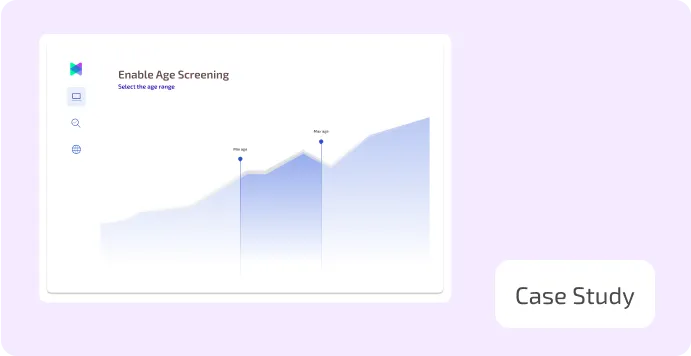.webp)
Published on
November 11, 2025
A Guide to Real Estate Money Laundering
In this story

Accelerate AML Compliance: Meet Regulatory Demands with 80% Less Setup Time
.svg)
.svg)
✨ AI Overview Summary:
The real estate industry is considered a high-risk area for money laundering because it is characterized by high-value transactions, flexible payment terms, international activities, and complex property structures. Fraudsters bank on these factors in their efforts to legalize their criminal money.
Common Methods:
- All cash transactions, payment in cryptocurrency in an attempt to conceal source funds
- Shell companies for covering beneficial ownership
- Rapid property flipping to legitimize illicit proceeds
- Construction projects with exaggerated or fictitious budget amounts
- Engaging third parties or relatives for property procurement
- Cross border transactions using different regulations
Red Flags:
- Requests for payment in cash or cryptocurrency
- Quick resale of properties or pricing far from market value
- Resistance to source of funds documentation
- Complex ownership structures using shell companies/trusts
- Payments made via offshore accounts or third parties
AML Compliance Strategies:
- Perform detailed KYC/KYB inquiries, including beneficial owner verification
- Watching for abnormal transaction patterns constantly
- Use independent property values to identify manipulation in prices
- Train workers on warning flags and reporting requirements
- Utilize AI/RegTech solutions such as FOCAL for automatic detection
- Keep transparency in accounts and collaborate with banks Regulatory bodies
Real estate-based money laundering schemes can be prevented by understanding typologies, tracking the red flags, following regulations such as the US’s FinCEN’s GTOs, EU’s 6AMLD, and the Economic Crime Act in the UK, among others, to ensure overall financial integrity is upheld. Technology is essential in these preventive efforts together with internal company controls.
Money laundering in real estate has been a very popular method that criminals use to disguise criminal funds. Due to the fact that real estate property transactions frequently have high values, negotiable payment schedules, and overseas counterparty activity, the industry has been a principal target for financial criminals.
We will explore the dynamics of money laundering through real estate in this article, why the profession is a high-risk profession, the most prominent real estate money laundering red flags, and how the compliance team can enhance detection and prevention through the utilization of AI-enabled products like FOCAL.
What Makes Real Estate High-Risk For Money Laundering?
Why is real estate high-risk for money laundering? The answer lies in the sector’s unique characteristics. Real estate offers criminals a way to convert illicit funds into stable, appreciating assets while concealing their true ownership.
Here’s why real estate laundering is so appealing to money launderers:
- High-value transactions allow large sums to move in one step.
- Appreciating assets make illegal money look like legitimate profit.
- Secrecy ownership arrangements conceal the real owner behind entities or trusts.
- Weak AML oversight in some markets, especially in residential real estate.
- Cross-border complexity, where varying regulations make detection harder.
This combination between anonymity, flexibility, and value appreciation explains the fact that the industry remains one of the most popular for real estate money laundering.
How Real Estate Is Used To Launder Money
Money Laundry in real estate is usually involved in three places placement, layering, and integration, but property transactions are the centre.
1. Placement
In the placement stage, illicit money is introduced into the economy by virtue of property buying paid for in cash by front companies, or by virtue of intermediaries. Some even combine money laundering by construction of fake buildings and projects only to be able to justify the flow of money.
2. Layer
During the layering stage ,the main objective here is to conceal ownership and money funds. Criminals therefore can:
- Recharge property to several shell companies.
- Pay for realties using offshore accounts.
- Inflate or deflate property values administratively.
- Buy and sell quickly the same property.
3. Integration
In the integration stage, when the property is sold or rented out, the money looks clean. The criminal has now legally-owned assets, and the loop of money laundering through real estate is complete.
Real Estate Laundering: Common Typologies
It is important to comprehend recurring patterns, also called typologies of real estate money laundering, that recur in cases globally to successfully battle real estate money laundering.
All-Cash Transactions: All-cash purchases are a common typology in real estate money laundering because they bypass banking supervision and reduce the paper trail. Criminals may use cash, prepaid instruments, or cryptocurrency to buy properties outright, often through shell companies or nominee buyers, to obscure the origin of funds. These transactions are high-risk, especially when multiple properties are bought quickly or source-of-funds documentation is incomplete or inconsistent.
Third-Party Transactions: Making third-party acquisitions or using relatives to acquire property.
Shell Companies: Setting up corporate layers to hide beneficial ownership.
Over- and Under-Valuation: Manipulation of property values to conceal money laundering.
Property Flipping: Rush to resell of properties to create criminally-derived money appear as legitimate profit.
Construction Projects: Using fake or exaggerated budgets to channel money through construction developments, common in construction money laundering schemes.
Cross-Border Transactions: Profiting from discrepancies between interstate AML regimes.
Comply quickly with local/global regulations with 80% less setup time
.svg)
.svg)
How To Detect Real Estate Money Laundering
Real estate money laundering red flags need to be closely monitored for with a sharp eye for detail and a well-organized compliance system, since these flags frequently highlight efforts to secretly launder money in real estate transactions. Real estate is more receptive to these practices because it is a high-value transaction with flexible payment terms, in addition to its complex ownership structure.
Professionals should look for unusual behaviour such as:
- Buyers demanding payments in cash or bitcoin.
- Transactions in third-party or offshore accounts.
- A purchaser's income failing to meet the property's values.
- Hesitation to produce source-of-funds verification.
- Prices far higher or lower than the market.
- Quick buying and selling of the same asset.
- Ownership through shell companies or complex trusts.
- Claims for refunds or overpayments shortly after buying.
Identifying these red flags early not only helps prevent the integration of illicit funds into the financial system but also strengthens a company’s compliance program, safeguards market integrity, and reduces legal and reputational risks. Continuous monitoring, combined with thorough KYC procedures and advanced detection tools, ensures that suspicious activity is caught before it escalates into larger financial crime.
How Money Is Laundered Through Construction
Money laundering through construction represents another major vulnerability in the property sector. Criminals may channel illicit funds into real estate development to make dirty money appear as legitimate business income.
Red flags to watch for include:
- Projects funded mainly through unknown investors.
- Unjustified cost overruns or inflated budgets.
- Frequent changes in project ownership or investors.
- Payments to subcontractors or suppliers based in secrecy jurisdictions.
The construction sector’s complexity makes it an ideal vehicle for money laundering through real estate, particularly in high-growth markets where oversight may lag behind development speed.
How Real Estate Affects Markets
The legal and social impacts of money laundering in property are extensive.
Price Inflation: Illegal demand swells property values, making them less affordable for average citizens.
Market Distortion: It is difficult for genuine investors to compete against criminal financiers.
Loss of Transparency: Advanced ownership structures damage confidence.
Reputational Risks: Brokers, developers and companies are risked to be associated with criminal organizations.
Regulatory Cost: Governments add increased controls, escalating all compliance expense. For the sake of the real estate money laundering in the example of the USA case scenario, FinCEN has issued such geographic targeting orders (GTOs) requiring the reporting of the beneficial owners in the high-risk areas around New York, Miami, and Los Angeles.
Anti-Money Laundering Regulations for Residential Real Estate Transfers
Governments worldwide are tightening anti-money laundering regulations for residential real estate transfers to close loopholes.
In the United States, FinCEN enforces reporting requirements for certain cash transactions under the Bank Secrecy Act (BSA). The European Union’s 6th Anti-Money Laundering Directive (6AMLD) and the UK’s Economic Crime Act require property professionals to identify beneficial owners and report suspicious activity.
These frameworks aim to ensure:
- Verification of buyer and seller identities.
- Identification of ultimate beneficial owners (UBOs).
- Timely reporting of suspicious activity reports (SARs).
For real estate professionals, compliance with anti-money laundering regulations for residential real estate transfers is no longer optional, it’s a core business requirement.
How can real estate companies detect and prevent money laundering?
To counter real estate money laundering, companies need to adopt strong internal controls, continuous monitoring, and technology-based solutions
1. Increased Due Diligence: Perform extensive KYC and KYB screening. Check identities, authenticate beneficial owners, and evaluate the reasonableness of the client’s source of funds.
2. Constant Transaction Monitoring: Install automated flagging of suspicious patterns–like large cash transactions, rapid resale, or price variation.
3. Independent Valuation: Use certified appraisers to prevent price manipulation. Compare market data to identify over- or under-valued properties.
4. Employee Training: Make sure all agents and finance departments know their real estate money laundering red flags and their reporting requirements.
5. Application of RegTech and AI: Platforms such as FOCAL utilize machine learning to screen the behaviour of the client, history of transactions, and document legitimacy. Such software may identify money laundering in real estate models significantly quicker and more effectively than human reviews.
6. Good Record-Keeping and Work Cooperation: Keep transparent records of all the transactions and collaborate with banks and regulators to boost the industry's overall defence.
Conclusion
Real estate money laundering is a highly developed and dynamic danger that impacts markets, affordability, and financial stability. Comprehending Typologies of real estate money laundering, keeping a lookout for real estate money laundering red flags, and adhering to anti-money laundering guidelines for real property transfers will keep organizations ahead of criminals.
Technology has become central to that defence. Software such as FOCAL gives property and compliance staff the ability to automate verification of identity, track transactions in real time, and flag suspicious activity in real time, all of which further business integrity and the overall economy.
FAQ
Q1. What is an example of money laundering in real estate?
Investing in property using illicit funds and then selling it so that the source of the funds appears to be genuine. Such practices also relate to using nominees, overpaying for properties, among other means to conceal the source of funds.
Q2. What is money laundering in property?
Concealing proceeds from illicit activities using real estate transactions. Criminals could buy, refurbish, or resell property to launder their funds into the legal financial system.
Q3. What is the biggest risk in real estate?
Fluctuations in market values, devaluation, and instabilities in the economy could also influence it. Also, fraud, litigations, and exposure to money laundering activities make financial risk loose in real estate investments.
Q4. What industry has the most money laundering?
Banking services, financial institutions, real estate, casinos, and luxury goods businesses have high transaction volumes, thereby making these the favorite destinations for money laundering activities involving illegitimate funds.
Streamline Compliance: Achieve 80% Faster Setup for Fraud Prevention
.svg)
.svg)

How Aseel reduced onboarding time by more than 87% using FOCAL
Learn how FOCAL empowered Aseel to achieve new milestones.
.svg)
.svg)
Mastering Fraud Prevention: A Comprehensive Guide for KSA and MENA Businesses
51% of organizations fell victim to fraud in the last two years, don't be caught off guard, act proactively.
.svg)
.svg)
Featured blog posts
.svg)
AI-Driven Precision in Fraud Risk and AML Compliance
.svg)
.svg)

.svg)
.png)






.webp)



.svg)

_FastestImplementation_Small-Business_GoLiveTime.png)

_HighPerformer_Small-Business_HighPerformer.png)
_Leader_Leader.png)



%20(1).webp)